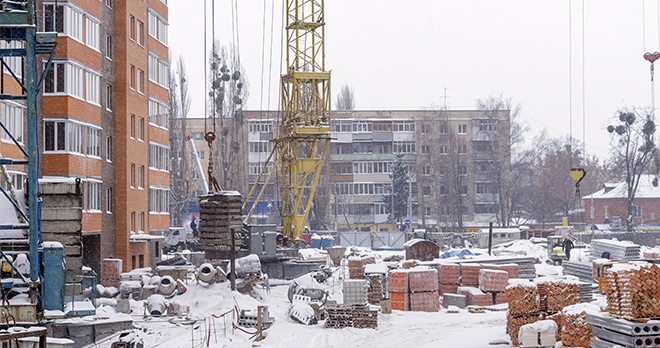Here we snow again – was the construction industry prepared for the weather?

Maintaining the health and safety for all site workers and the public is an obvious immediate concern whilst the snow is visible. Consequential delays to project completions and increases in costs, however, will be just as important as the snow melts.
So did employers, contractors, project managers and employer’s agents learn any lessons from last year’s snow storms in light of the most recent deluge?
A lesson learned?
As snow causes many construction and engineering projects to grind to a halt, parties should be turning their attention to the associated programme delays and cost implications for their projects.
As a reminder, the allocation of programme risk for weather events in an unamended JCT Design and Build Contract 2016 depends on if the weather conditions were exceptionally adverse. This term is not defined in the contract, but the contractor may be entitled to an extension of time if he follows the contractual notification processes. The employer’s agent has discretion to assess the type of weather event, and is likely to take into account the time of year, the frequency and severity of the weather occurring, and the project location. Depending on the practical implications of the snow, however, the parties should also consider whether a force majeure Relevant Event may have otherwise occurred.
Exceptionally adverse weather is effectively a neutral event under this JCT contract. If the employer’s agent assesses the snow as a Relevant Event, the employer cannot benefit from levying liquidated delay damages for the associated late completion of the project. To balance this, the contractor is not entitled to recover any loss and expense attributable to the consequences of the snow occurring.
The NEC suite of contracts approaches the consequences of weather differently. The Contract Data specifies the type of weather measurements that should be taken, which includes express reference to the number of days where snow is lying at a certain time of the day. The compensation event, entitling the contractor to potentially more time and/or money, is assessed objectively as the difference between the recorded weather measurement, and the weather which the weather data shows occurs on average less frequently than once in ten years. This assessment is not as straightforward as it sounds.
Practical steps to mitigate snow disruption
Even before the snow falls, and certainly before it melts, there are some practical steps the parties should take to deal with the consequences of site closures due to snow.
Depending on the geographical location of the project, and the planned site activities along the supply chain programme, the unamended standard form JCT or NEC contract provisions might need to be amended, or an additional price allocated to these risks upfront.
Employers should consider the potential commercial benefit of taking out business interruption insurance for any demonstrable losses due to the snow, which cannot be recovered from the contractor. Delay in start up or advance loss of profit policy extensions may also be available at an additional premium cost.
When the snow falls, maintaining contemporaneous records should be a critical action. Contractors and project managers should take photos of the affected site conditions, document efforts to mitigate the impact, revise programmes, and pro-actively update early warning / risk registers.
After last year’s snow storms, parties should have realised the risks and issues for construction projects do not necessarily stop as soon as the snow has cleared. If you are satisfied you have carried out all of the above, however, take the time to get the gloves out, build a snowman and enjoy the change from the rain.